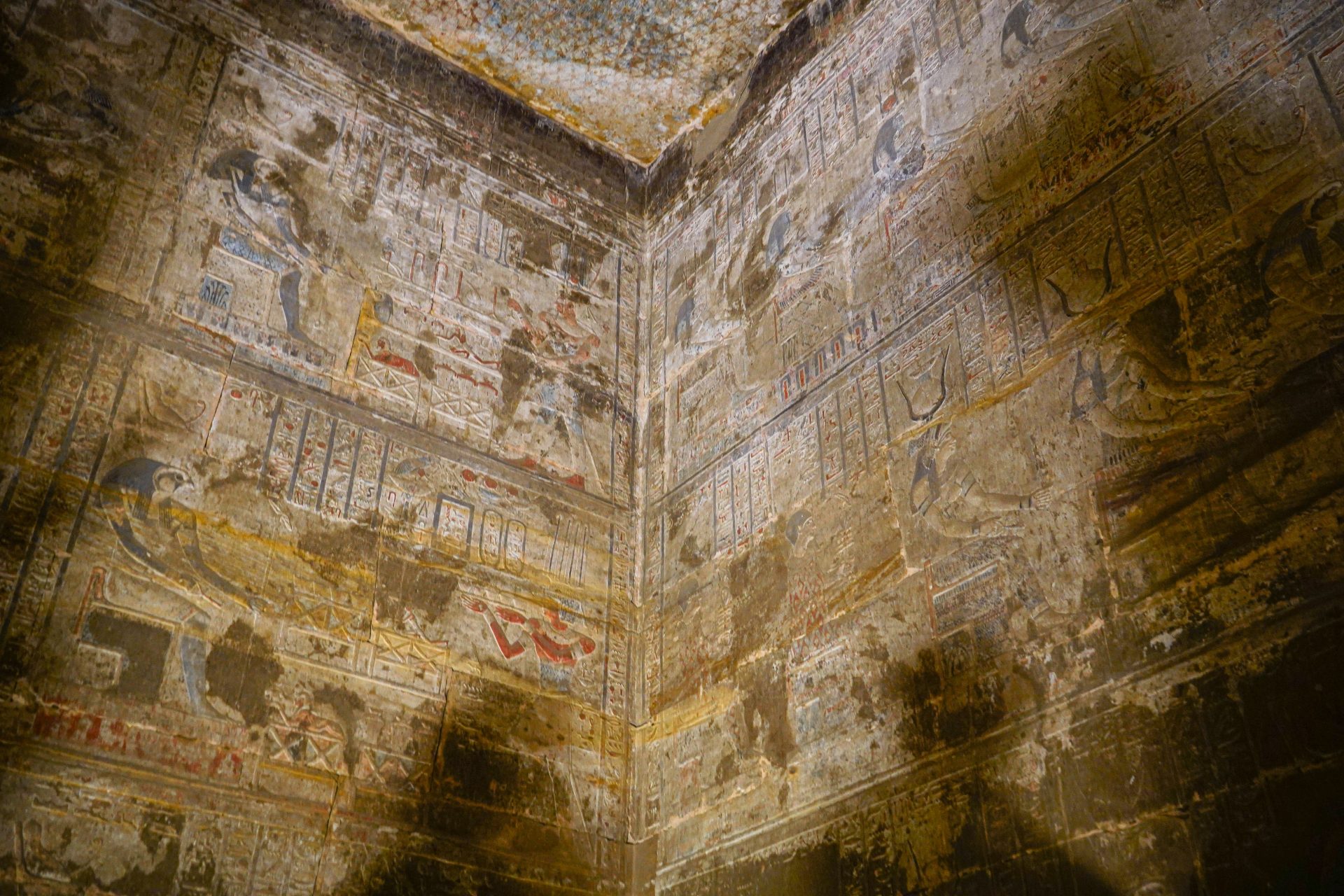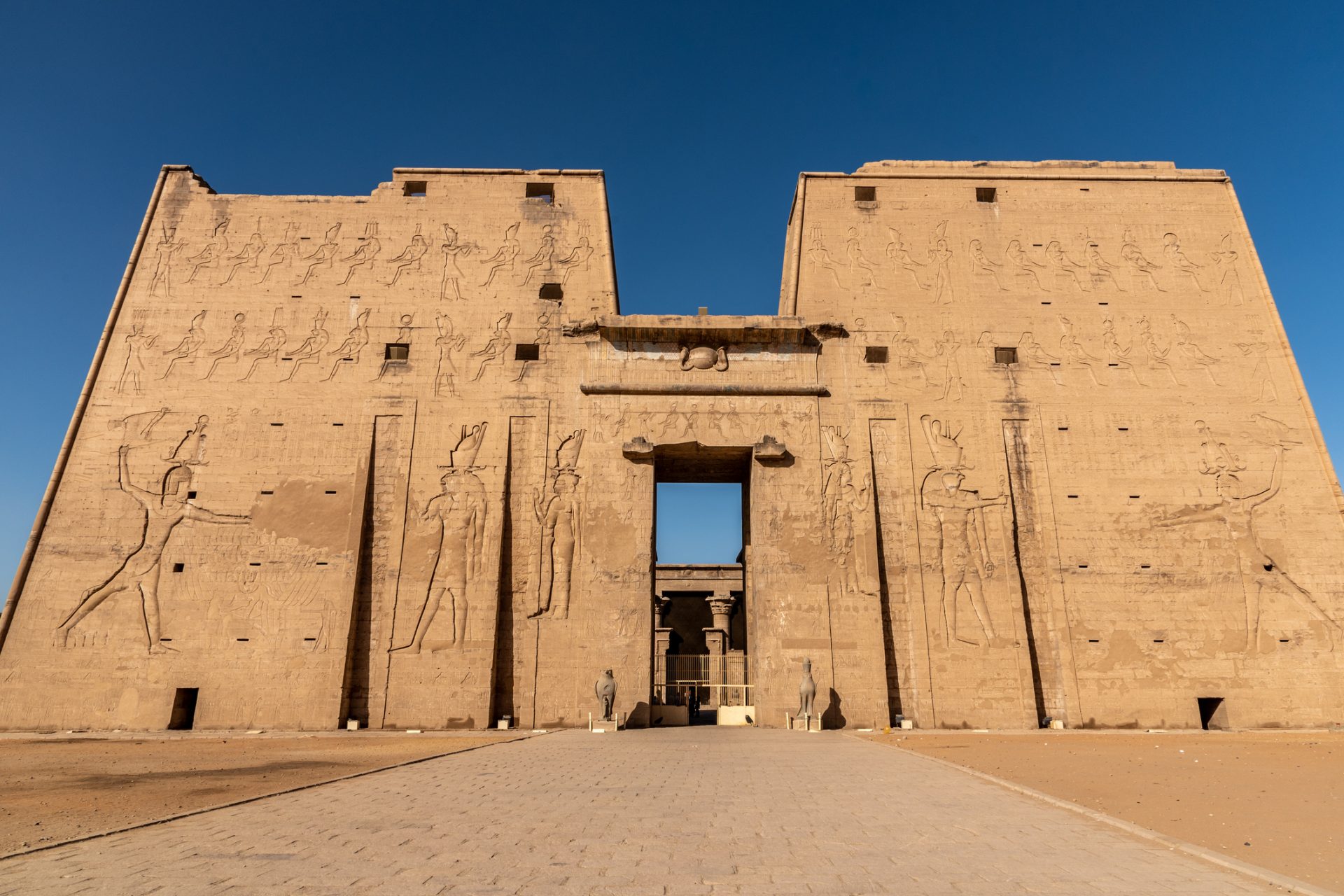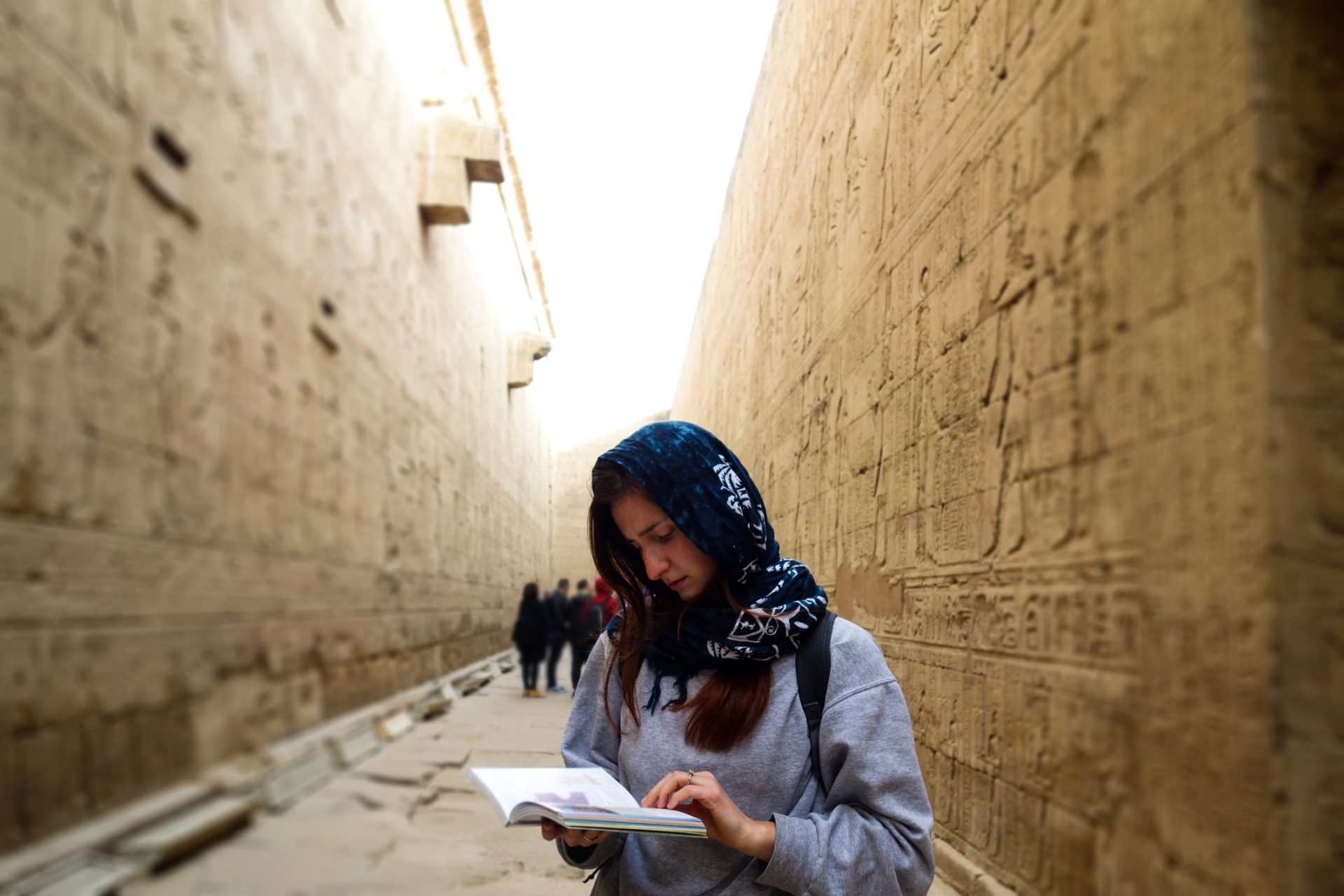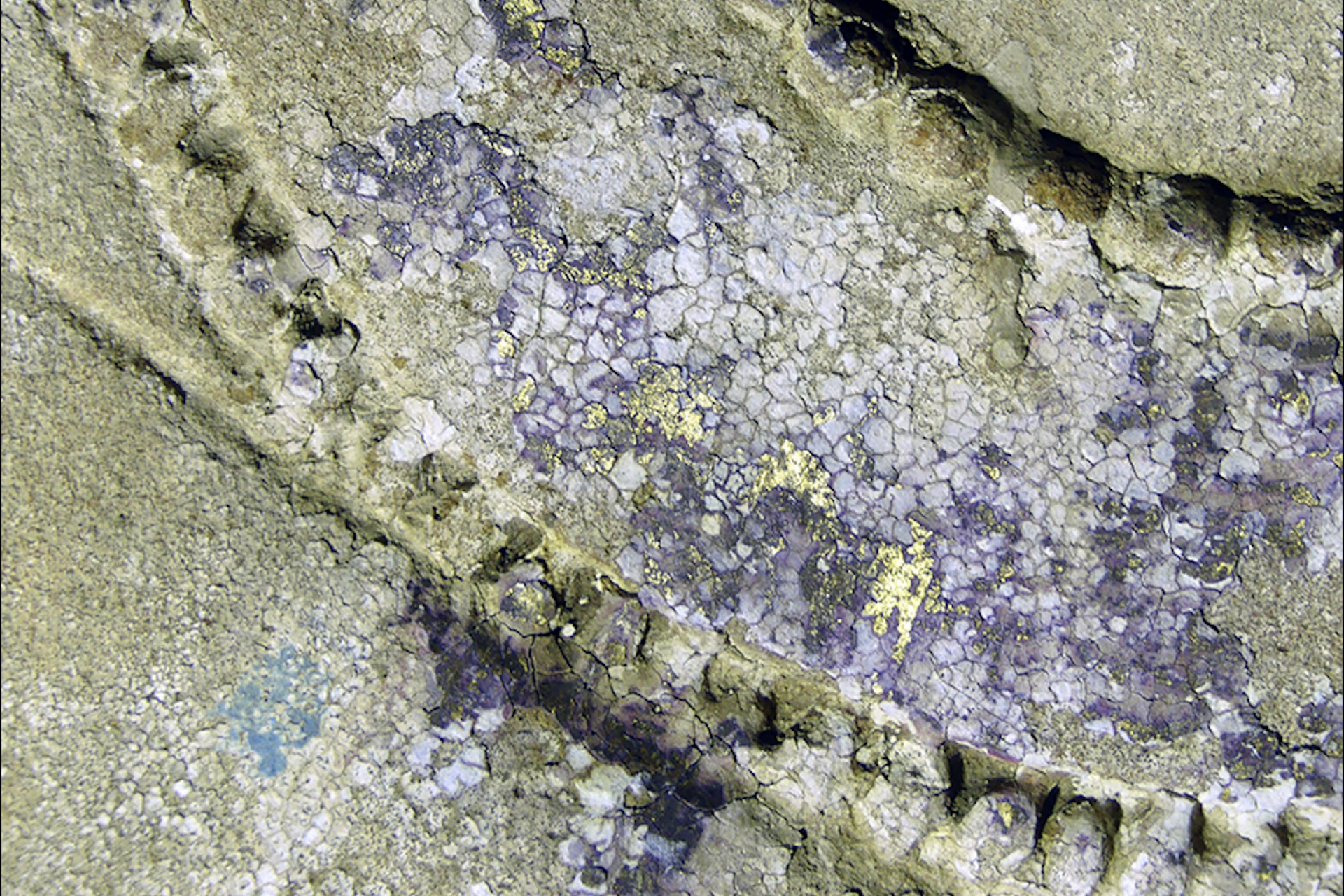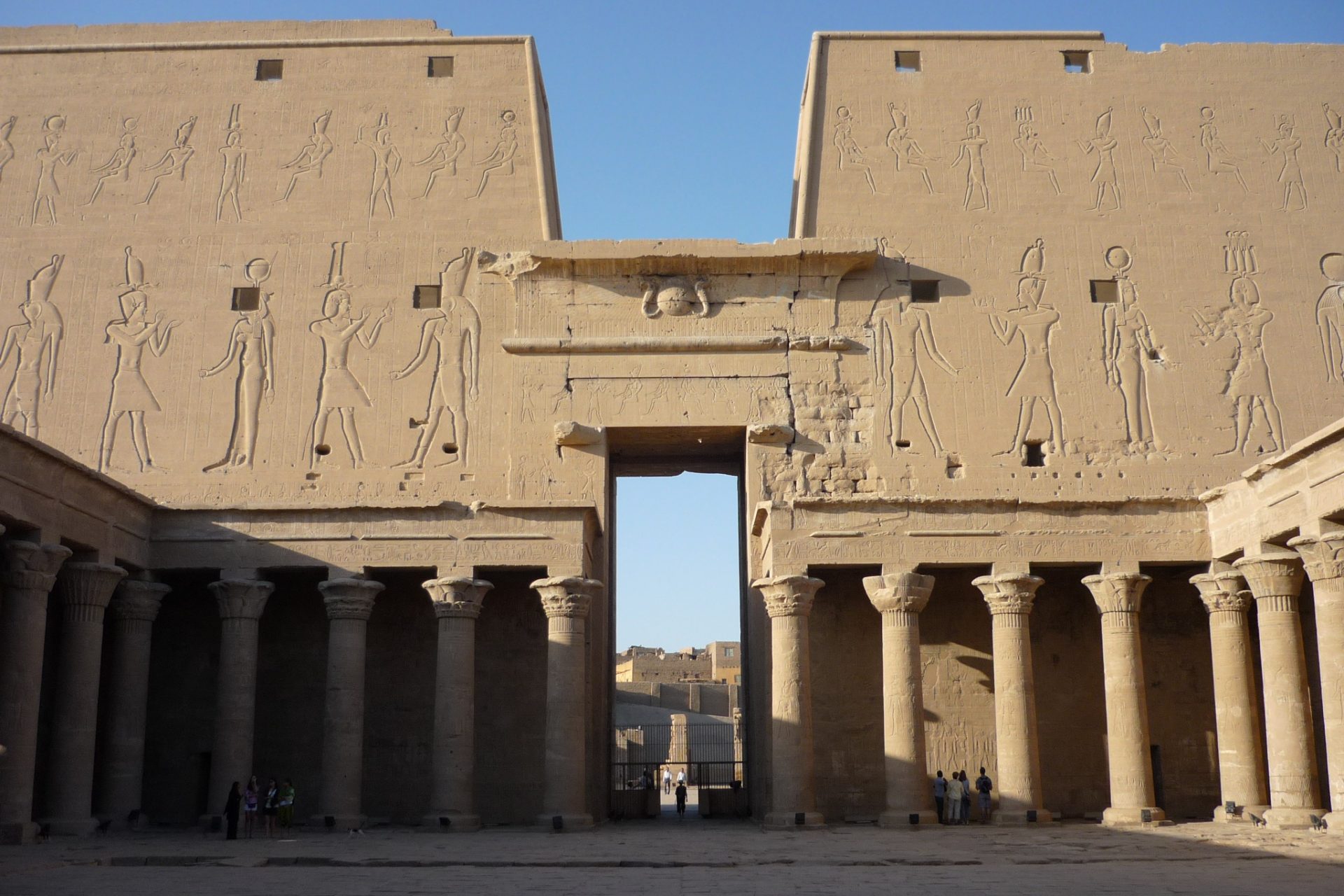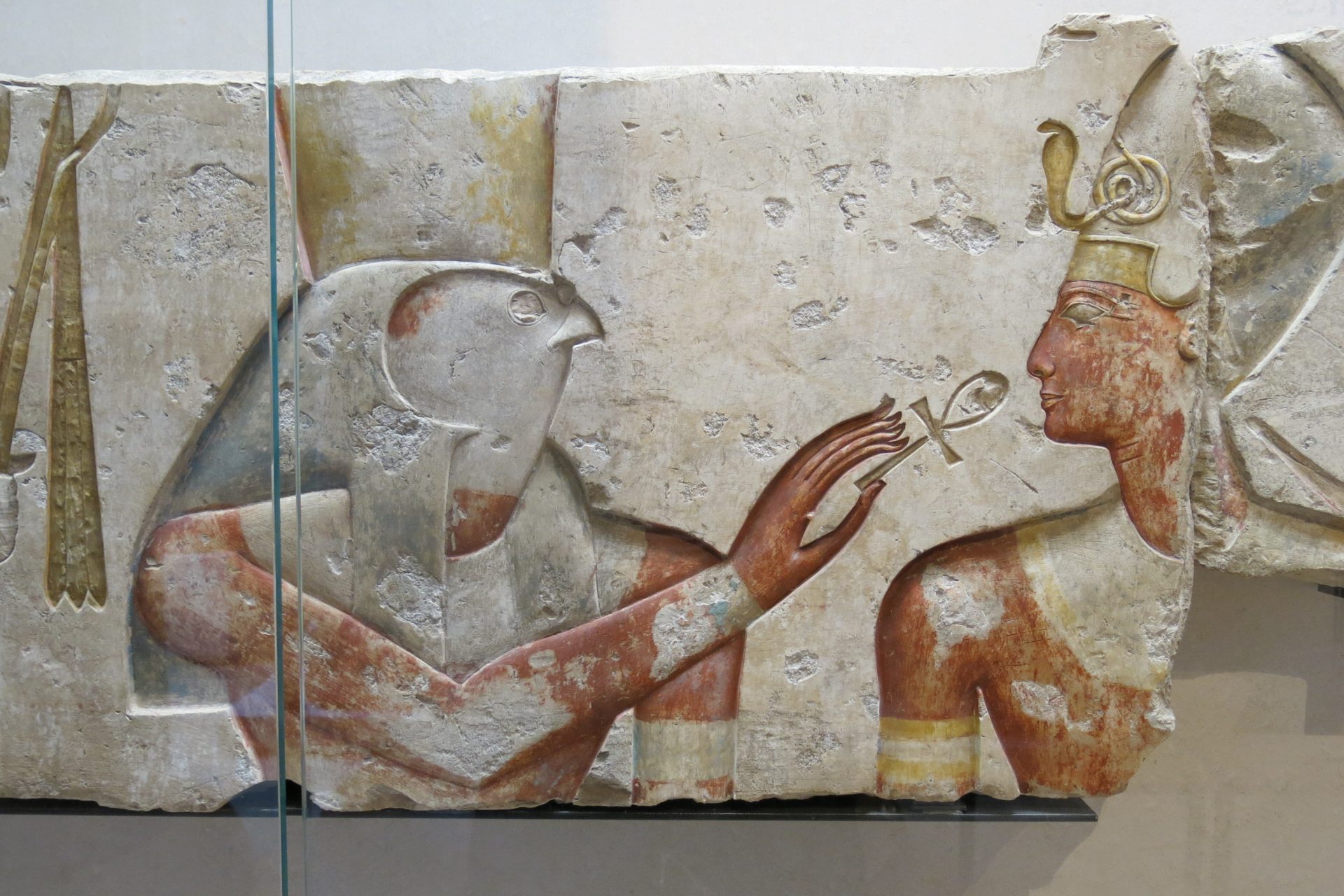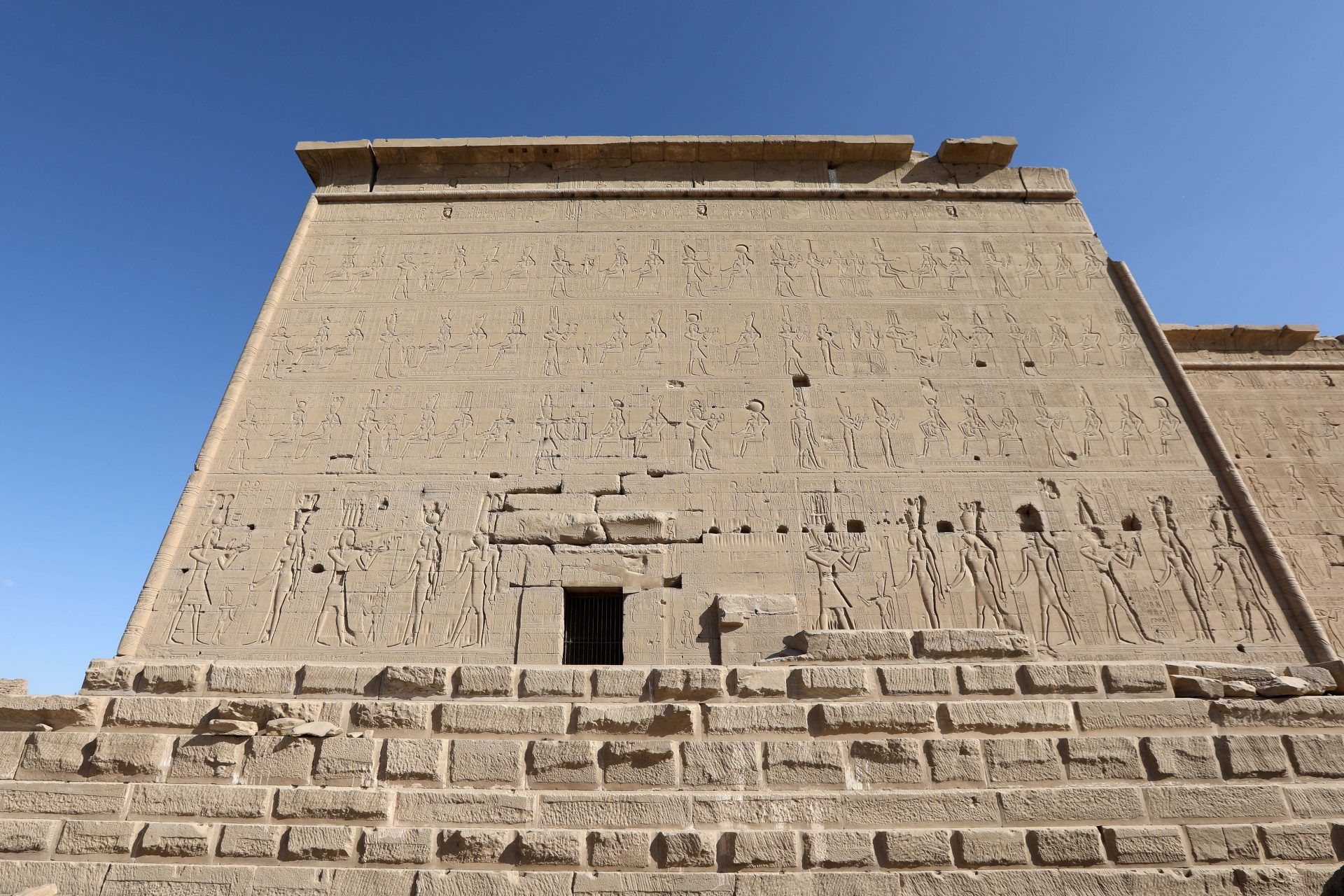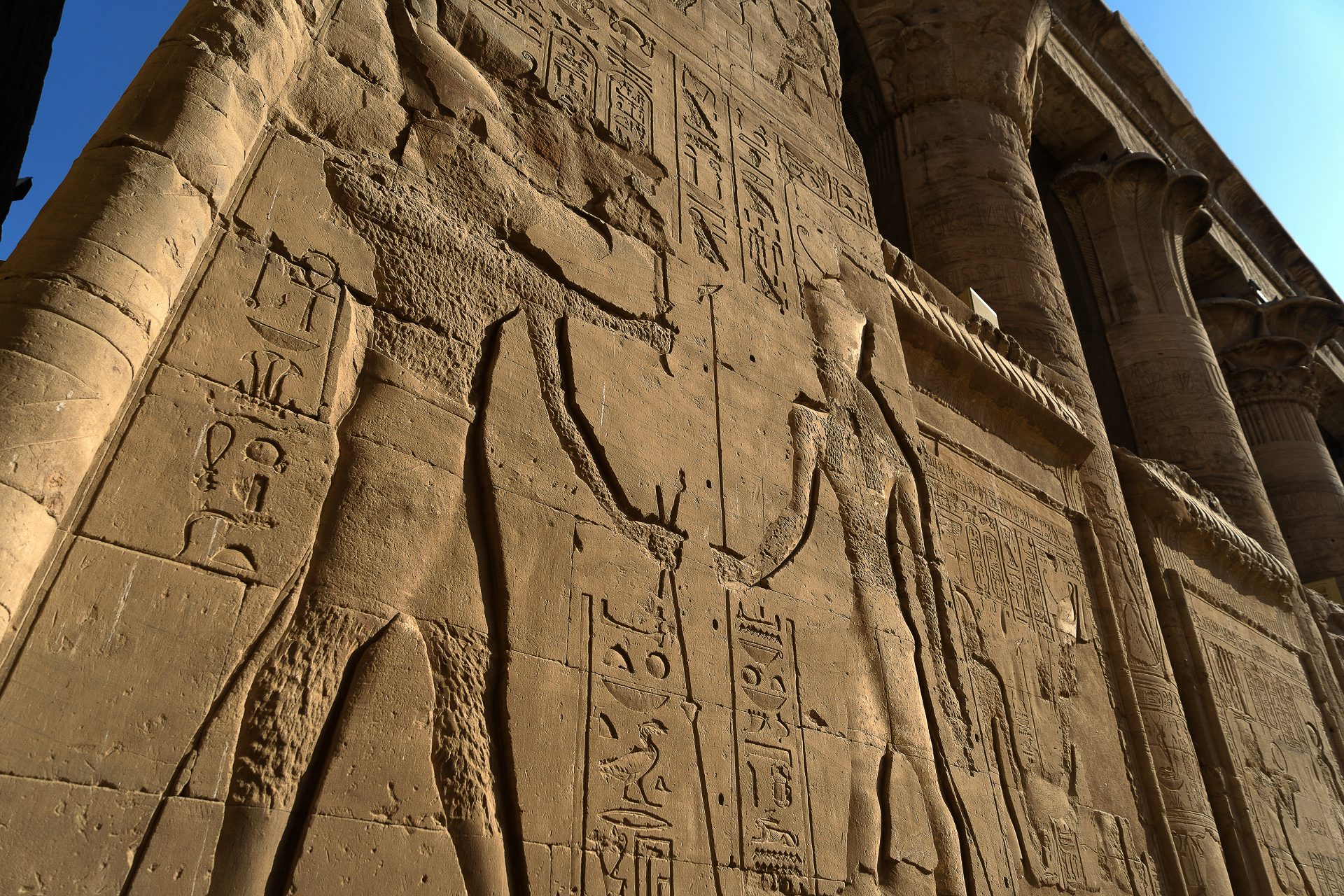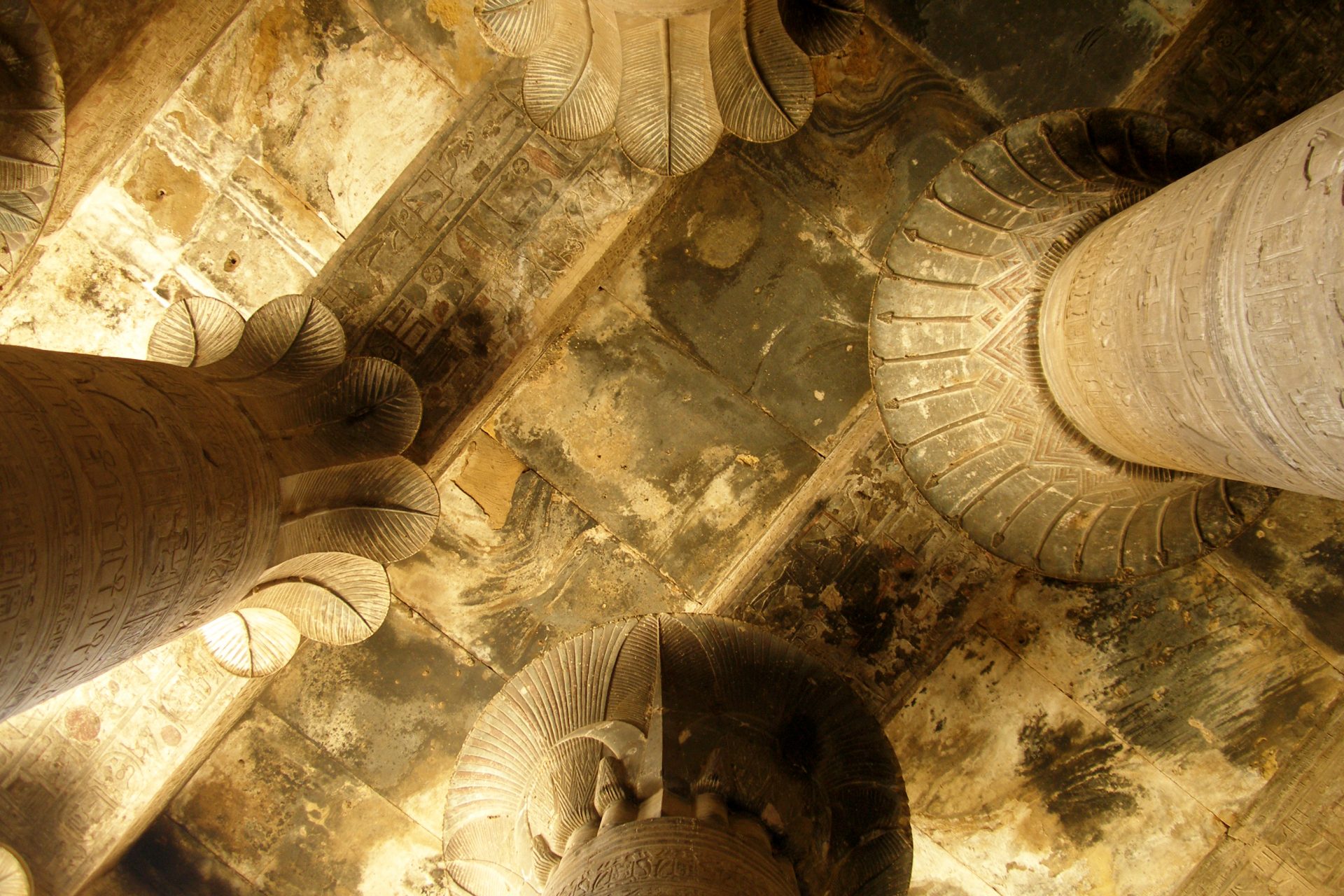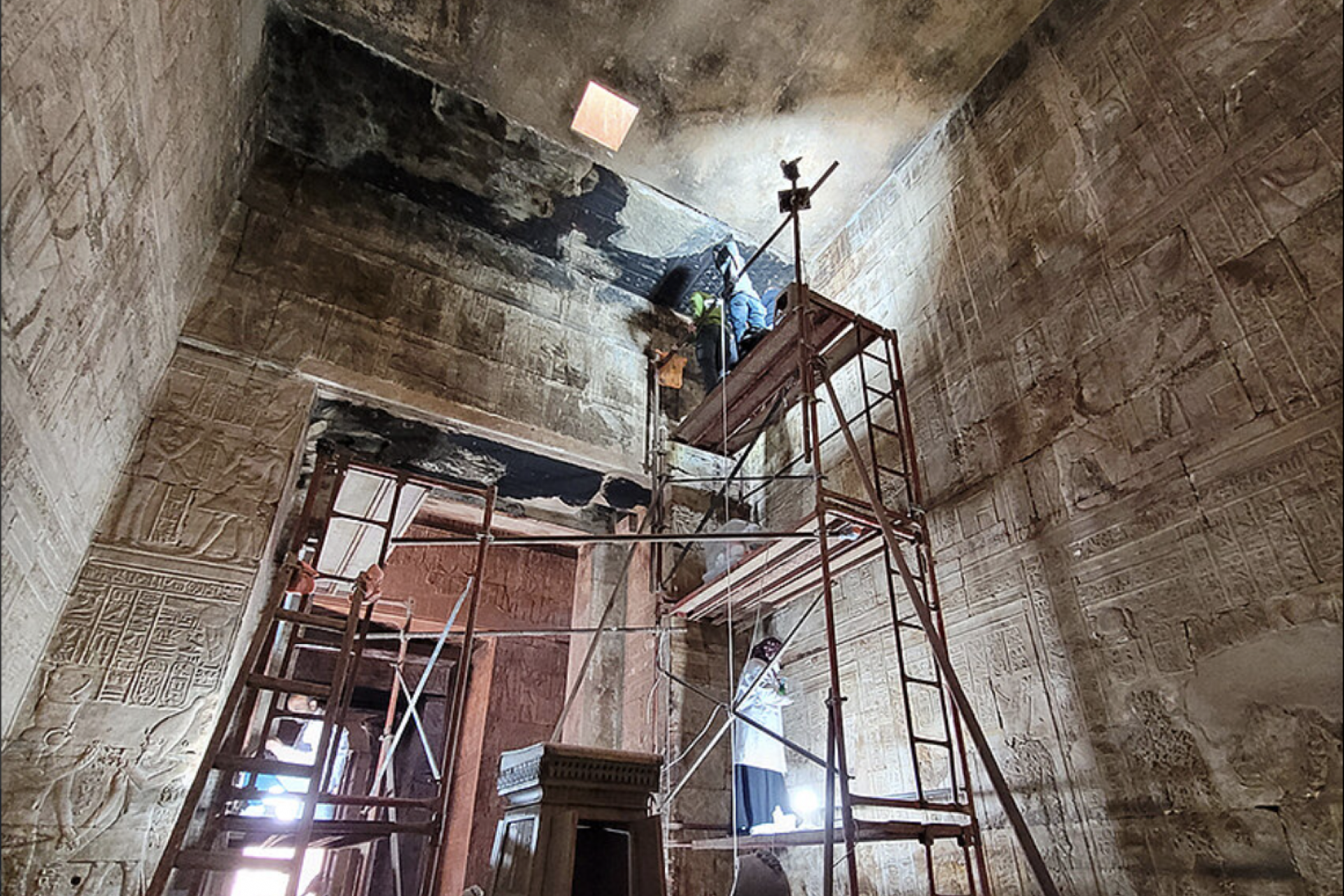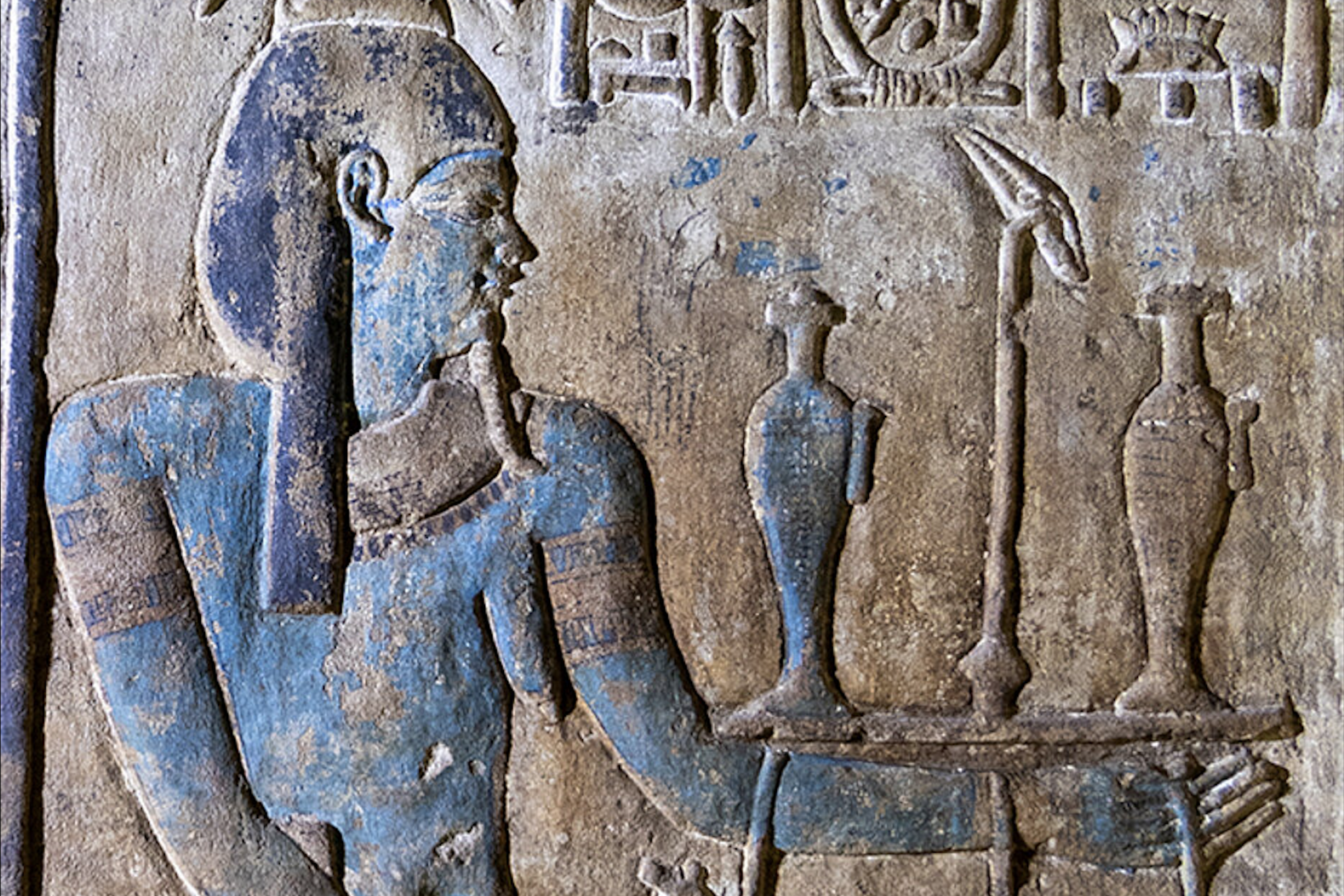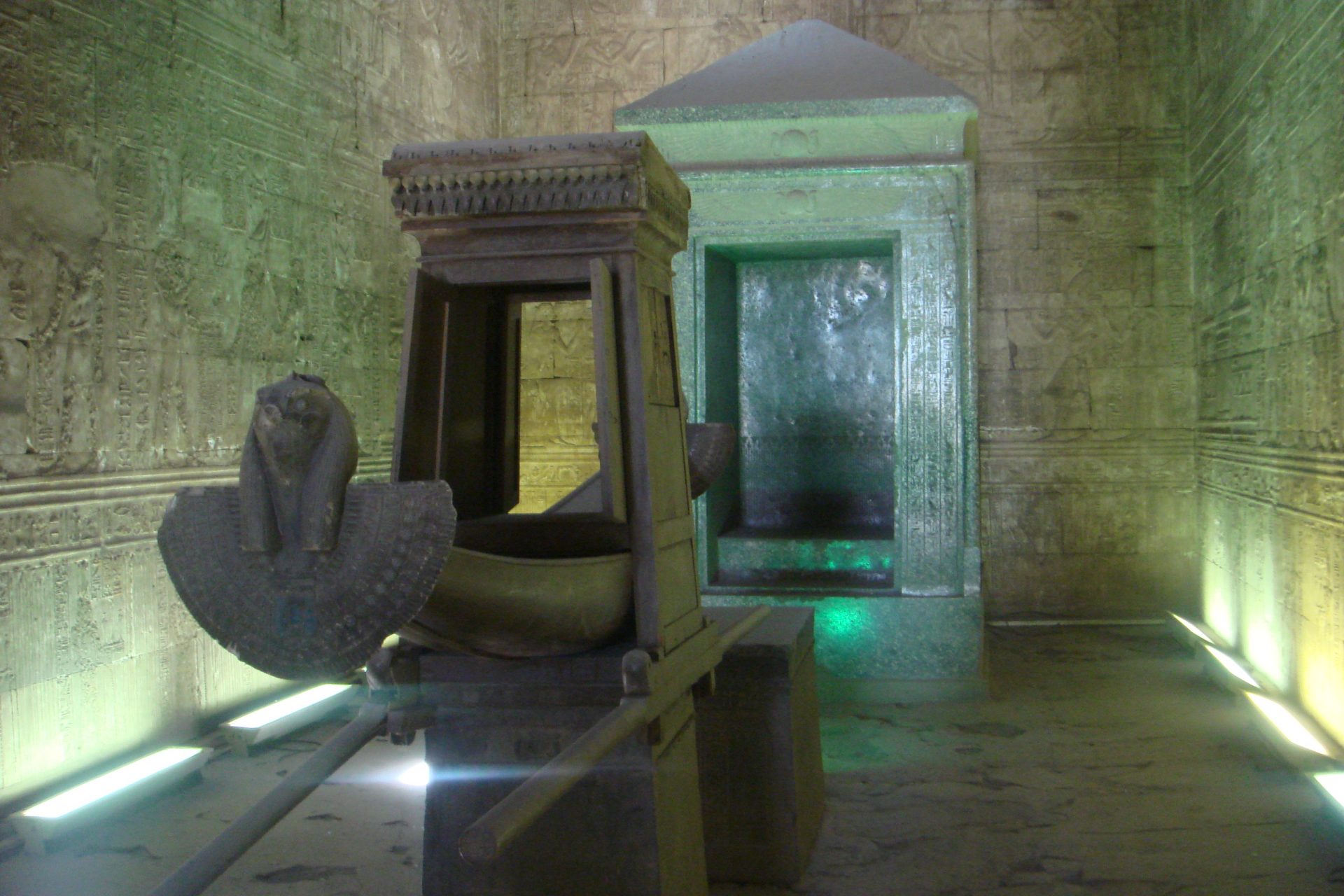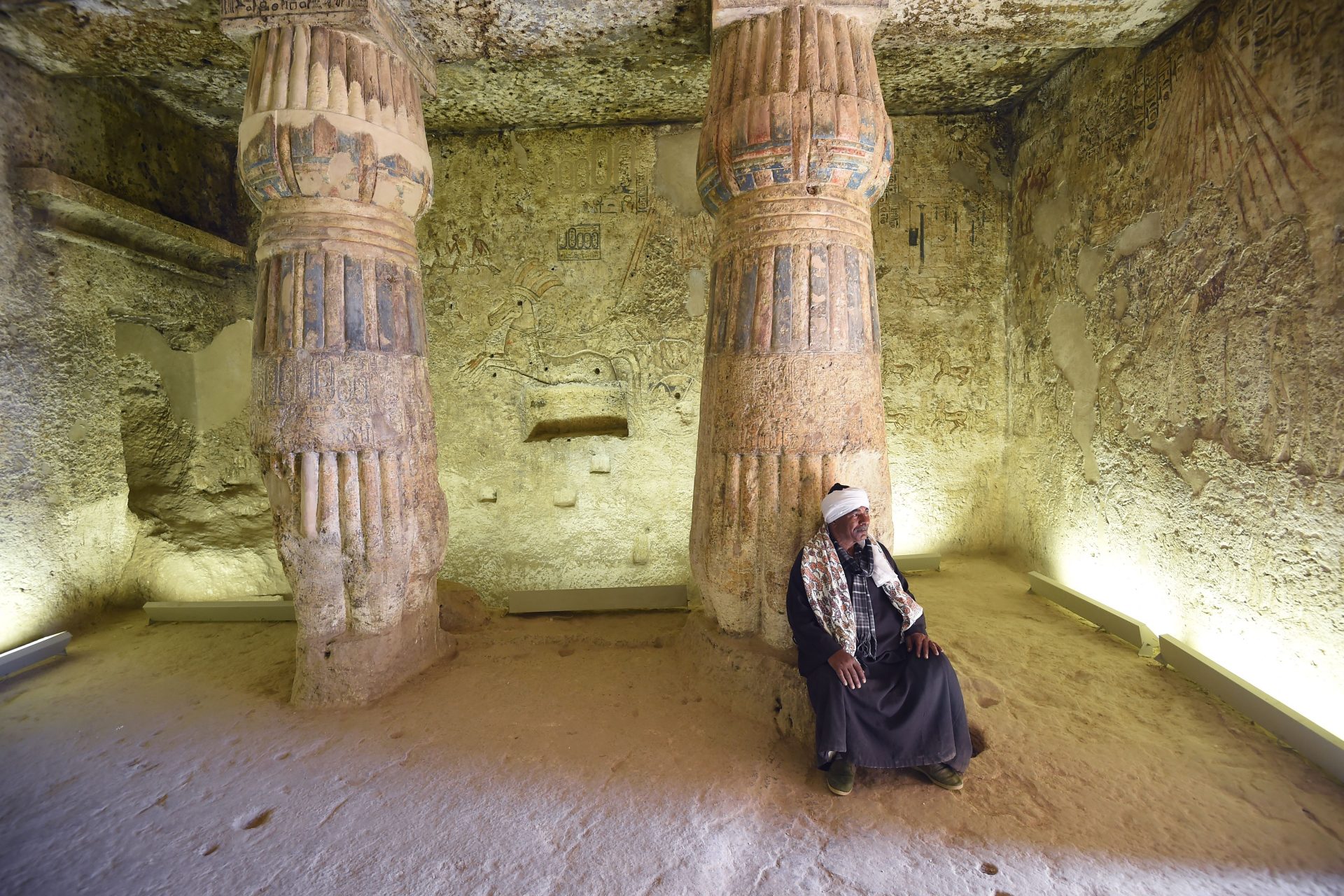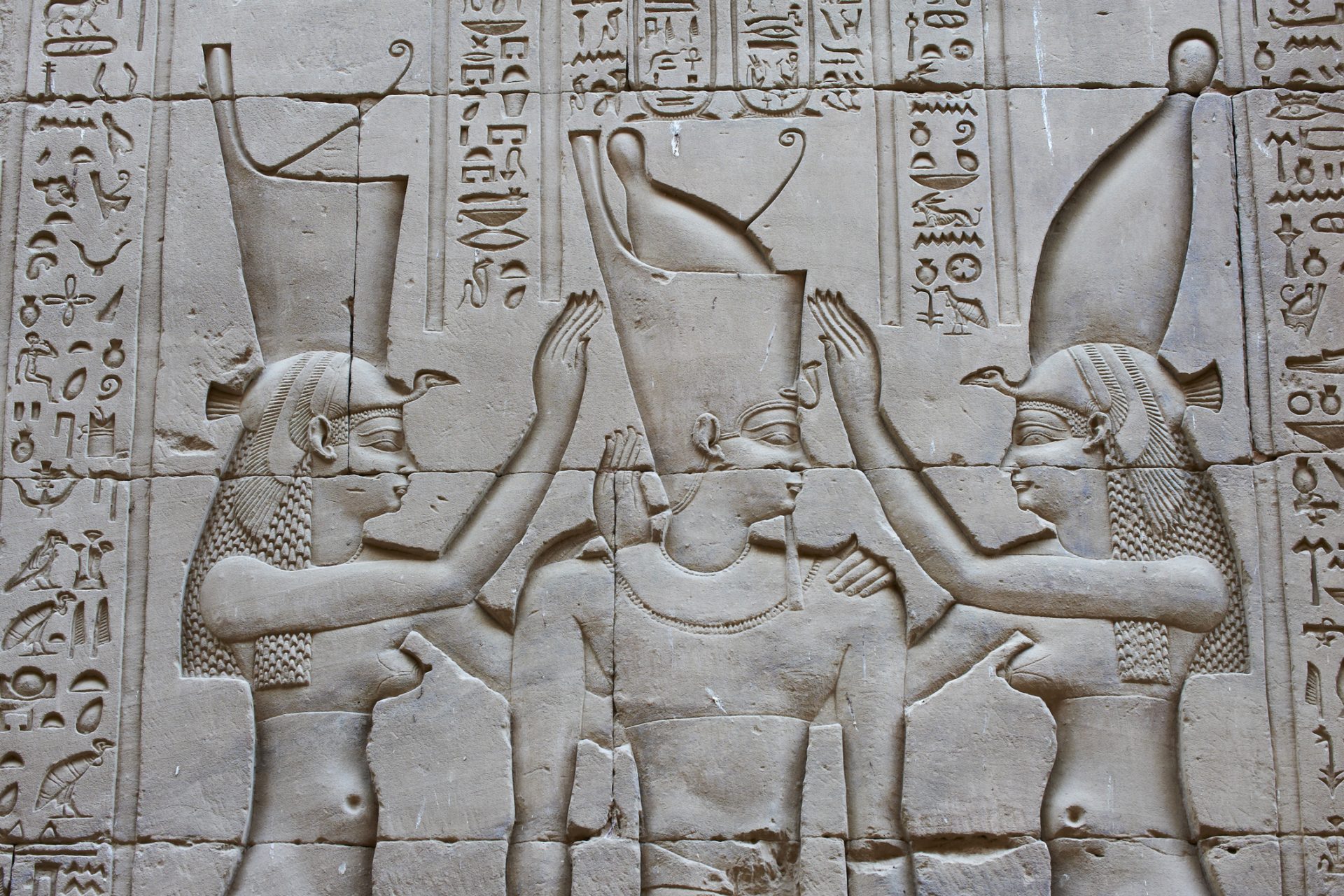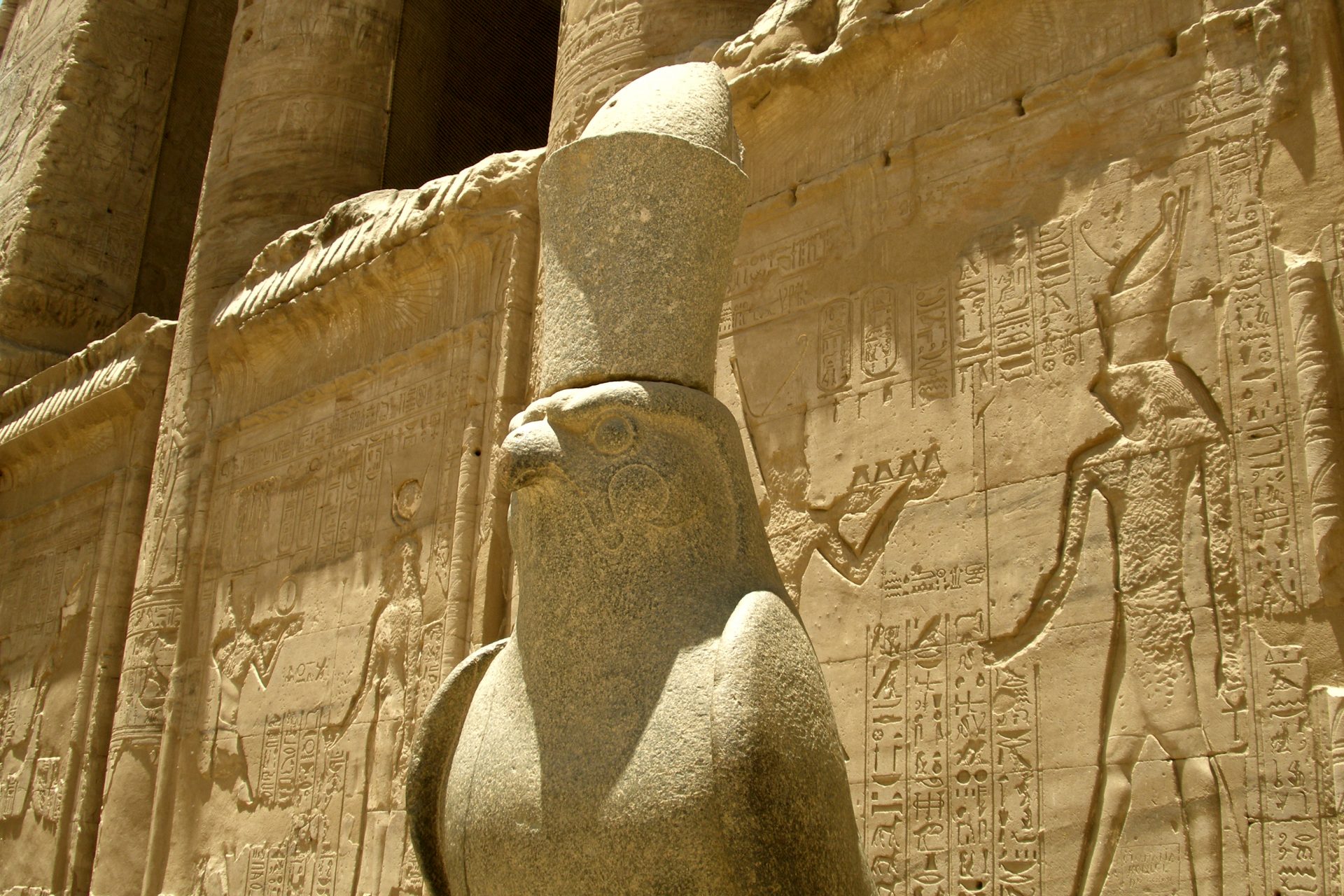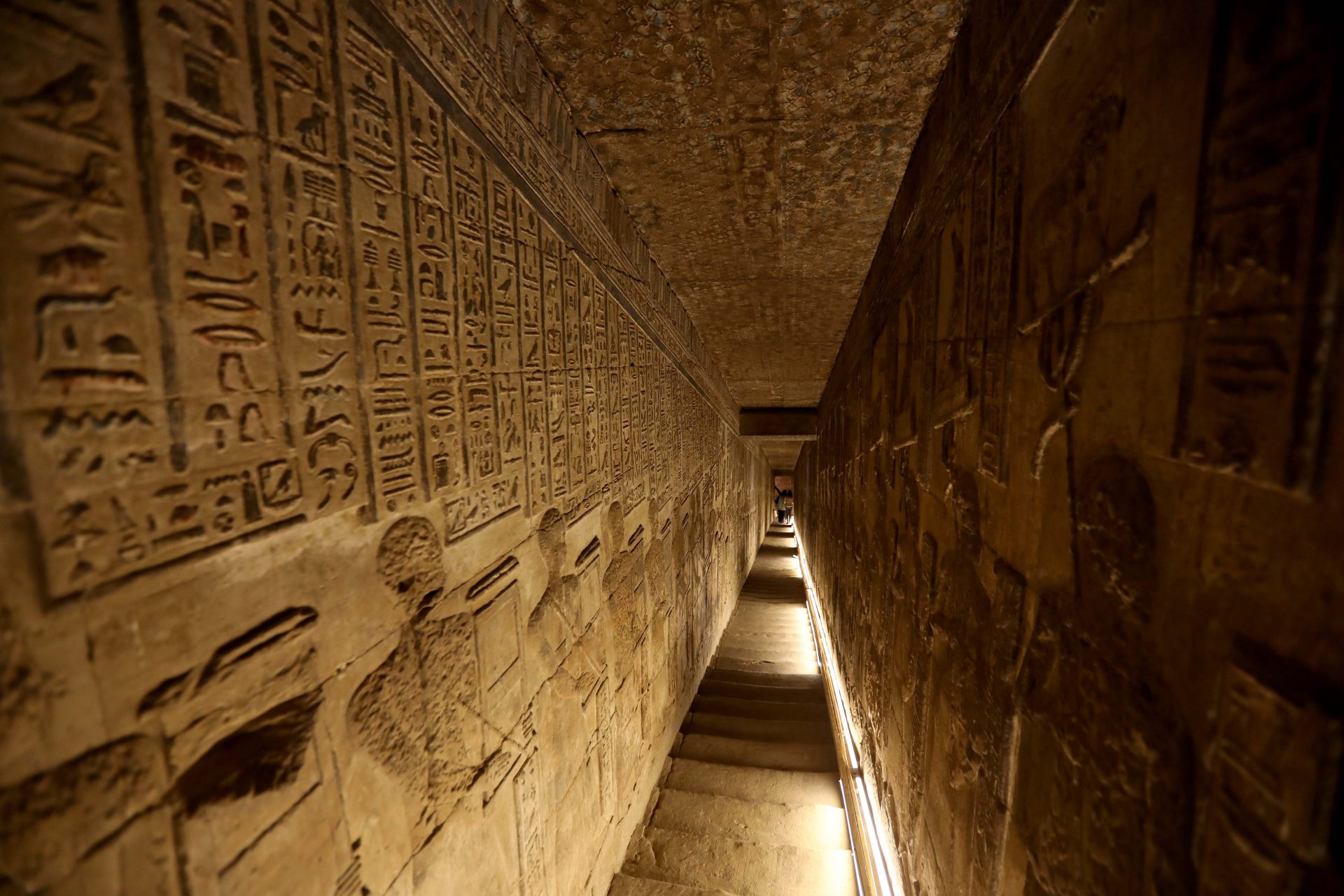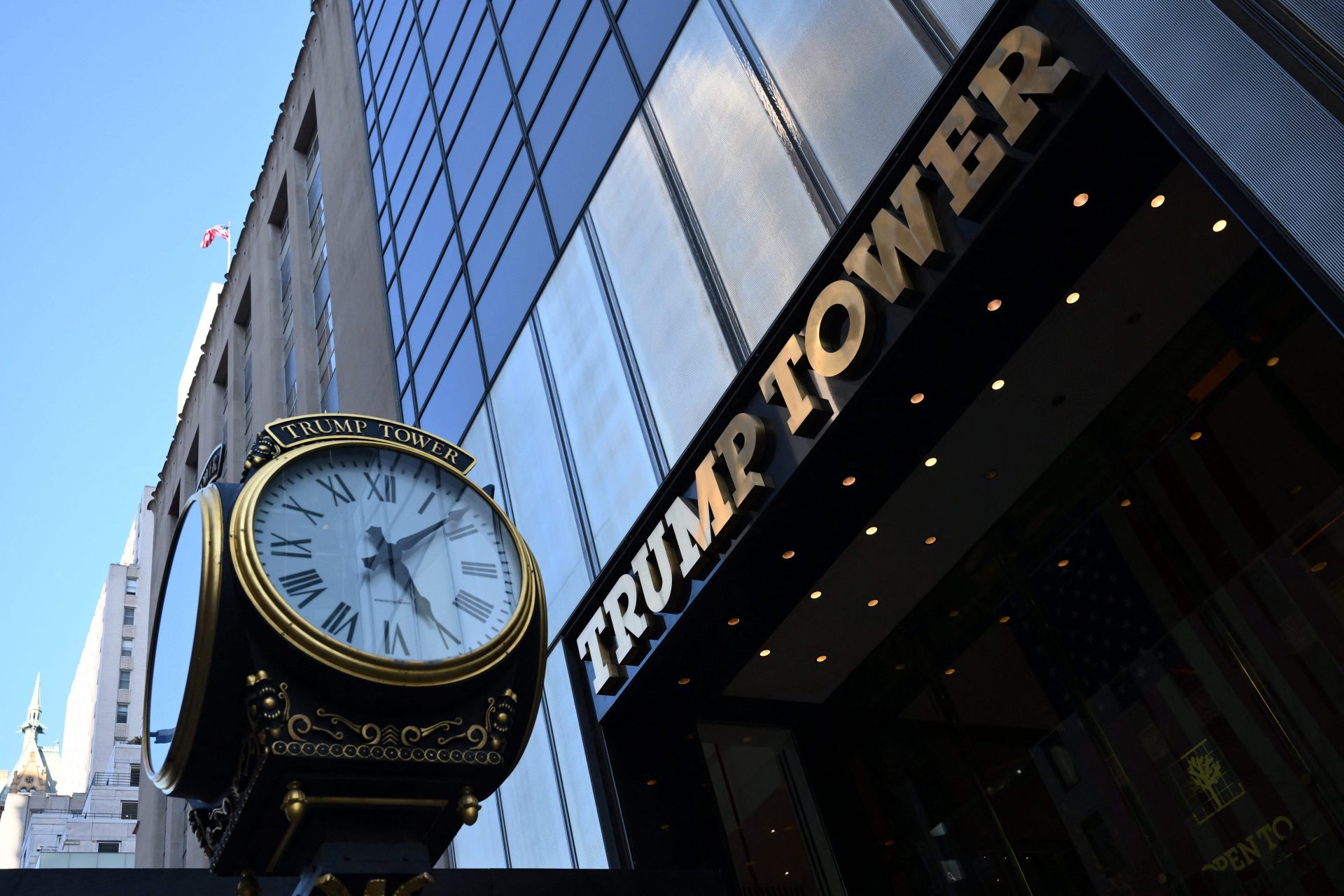Remember when archeologists made a remarkable discovery inside an ancient Egyptian temple?
In September 2024, it was revealed that a group of archeologists working to restore the interior inside one of the best-preserved ancient temples in Egypt made a remarkable discovery.
The discovery was a big one since it had the potential to change everything that we thought they knew about how the ancient Egyptians enhanced and colored their hieroglyphs and wall reliefs.
Ongoing restoration efforts at the Egyptian Temple of Edfu by a team of archeologists from the Julius Maximilian University of Würzburg in Germany uncovered several new insights about the walls of the building.
According to the German team, they discovered the remnants of colorful paints as well as traces of gold leaf and graffiti on the walls inside of the religious building according to a report from Newsweek.
Photo Credit: Victoria Altmann-Wendling / Universität Würzburg
The Temple of Edfu is one of the most well-preserved sanctuaries from the ancient period according to Newsweek’s Aristos Georgiou. The temple was built over the course of 180 years from 237 B.C. to 57 B.C.
Photo Credit: Wiki Commons By I, Rémih, CC BY-SA 3.0
Dedicated to Horus, the ancient Egyptian sky god, the temple was built at a time when Egypt was ruled over by Greek rulers known as the Ptolemaic dynasty. This dynasty took power in Egypt after the death of Macedonian King Alexander the Great.
Photo Credit: Wiki Commons By Tangopaso - Self-photographed, Public Domain
Georgiou called the Temple of Edfu a “marvel of ancient engineering.” The structure is roughly 450 feet (137 meters) in length, about 250 feet (138 meters) wide, and nearly 115 feet (35 meters) in height. But what really makes the temple special is its surface.
“Its surface is completely covered with hieroglyphic inscriptions and pictorial reliefs, featuring numerous religious texts and ritual scenes,” Georgiou noted. The Temple of Edfu also had a very storied history throughout the ages.
“In antiquity, the temple was located at the center of a regional capital, comparable to a medieval cathedral, but also served as a hub of learning and higher education,” added Georgiou. However, the latest discovery at Edfu seems to be adding to the temple's fame.
Photo Credit: Wiki Commons By Tangopaso - Self-photographed, Public Domain
According to Martin Stadler, Chair of Egyptology at the University of Würzburg and the leader of the ongoing Horus Beḥedety research project at the Temple of Edfu, work at the temple is significant because the site's colorizations have never been examined.
Photo Credit: Victoria Altmann-Wendling / Universität Würzburg
"The coloration of the Horus-Temple of Edfu has never been subject of Egyptological study and is still largely unknown today. Therefore, we are missing an important facet of the temple needed to fully understand it," Stadler said according to Newsweek.
Photo Credit: Martin Stadler / Universität Würzburg
"The coloration of these reliefs plays a central role here, but is currently beyond our grasp because, above all, dirt conceals it. The aim of restoration is to uncover and research this source of information, which is essential for ancient Egyptian iconography, in Edfu," Stadler added.
A statement on the discovery from the University of Würzburg noted Egyptian temples were not drab brownish-colored structures, but rather they were colored vibrantly and glistened with gold. However, such beauty has mostly been lost to time.
"The rediscovery of the multicolored temples of Egypt will revolutionize the impression of the sanctuaries, which currently appear mostly as brownish-beige monoliths that hardly stand out against the background of the desert landscape," Stadler explained.
Egyptologists have scant evidence of gold leaf decoration in Egyptian temples but the discoveries at the Temple of Edfu provide an interesting insight into how the Egyptians of the Ptolemaic period opted to decorate their religious buildings.
Several other interesting discoveries were also made by archeologists, including the fact that ancient painters fixed errors in hieroglyphs. “In the painting, we are capturing an ancient quality management,” Stadler said according to the university’s statement.
Photo Credit: Wiki Commons By Vyacheslav Argenberg, CC BY 4.0
Ancient graffiti written in ink was also uncovered during the restoration project, namely in the form of personal testimonies from priests. Newsweek noted that the graffiti was written in the Egyptian Demotic script, a practice quite common at the time.
More for you
Top Stories



